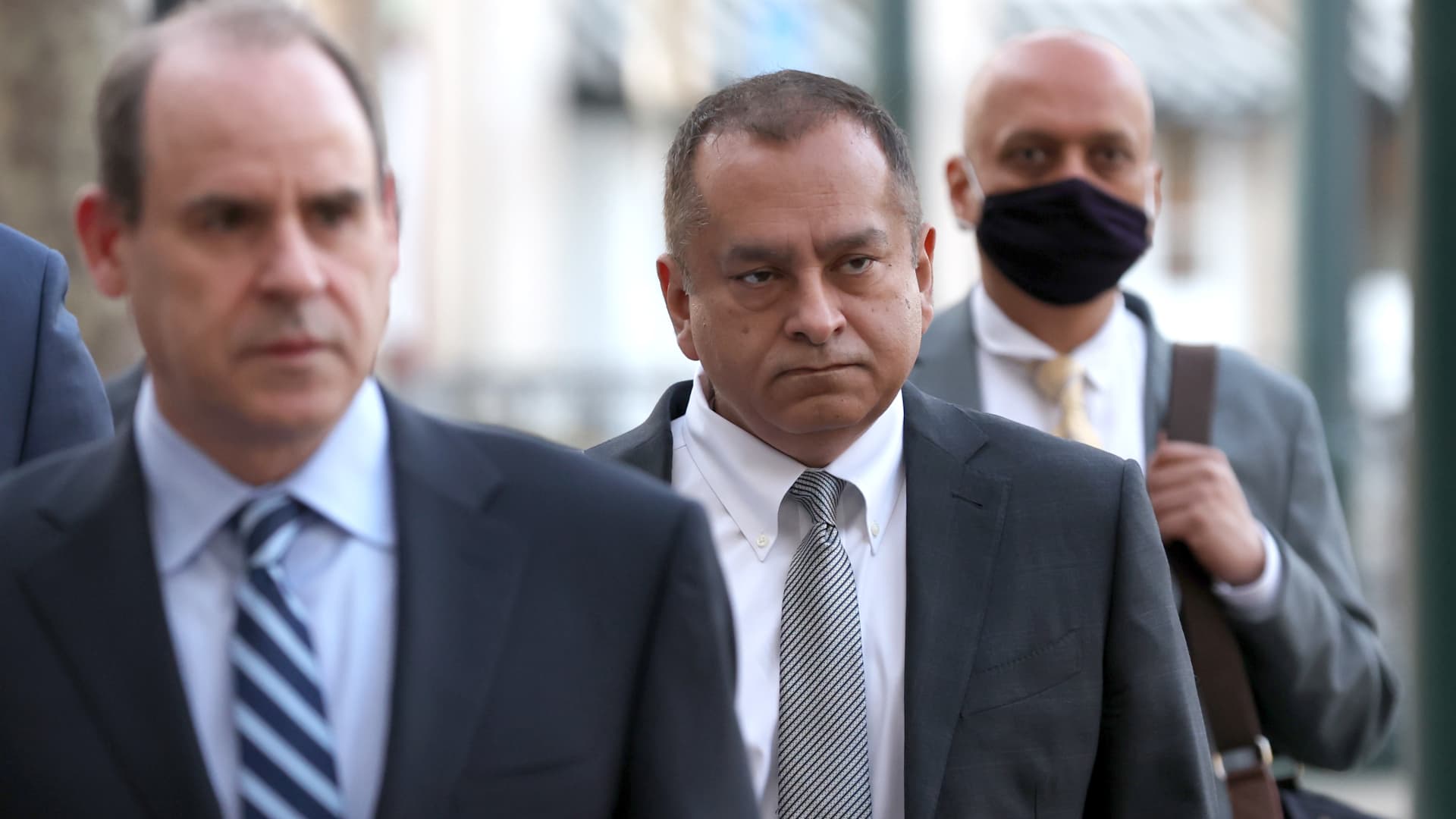Products You May Like
SAN JOSE, Calif. — In a harshly worded closing argument, prosecutors on Tuesday said former Theranos COO Ramesh “Sunny” Balwani “wasn’t a victim, he was the perpetrator of fraud” in the company’s downfall, while his attorney blasted the government’s case calling it inconsistent.
The closing statements capped a three-month-long trial where the government alleged Balwani acted with his ex-girlfriend and business partner, Theranos founder Elizabeth Holmes, in a multi-million-dollar scheme to defraud investors and patients.
“Mr. Balwani had a choice to make,” Assistant U.S. Attorney Jeffrey Schenk said. “He could watch Theranos fail, he could watch his girlfriend’s business collapse, or he could pursue it differently. Mr. Balwani at the time knew that Theranos was not generating money and would not generate any revenue by being honest with people.”
In his four-hour closing argument, Schenk relentlessly attacked Balwani’s credibility at Theranos and linked him to multiple parts of the business.
“Together, with Elizabeth Holmes, they came up with two schemes,” Schenk said. “Two plans to defraud these groups of individuals. They decided to defraud investors in Theranos and they decided to defraud patients. And it’s because of those decisions that Mr. Balwani made that we’ve been together since March.”
Balwani, 56, faces ten counts of wire fraud and two counts of conspiracy to commit wire fraud. He, just like Holmes, has pleaded not guilty. Balwani joined Theranos in 2009 when the company was struggling financially. He stepped in by providing a $13 million loan.
Six months later, Balwani became chief operating officer and president of Theranos and eventually took over lab operations. Holmes and Balwani went to great lengths to keep their romance a secret from employees, investors and business partners.
At one point, Balwani’s stake was worth $500 million, according to his lawyers, and the software executive never sold a share. His personal and professional relationship with Holmes ended in 2016 just as Theranos began to unravel.
During closing arguments, Schenk ran the jury through all 24 government witnesses, summarizing their testimony while displaying their picture on the courtroom monitor.
The government’s case against Balwani was vastly similar to the case pursued against Holmes, who was convicted in January of four counts of fraud and conspiracy to commit wire fraud against investors. While Holmes awaits sentencing in September, her attorneys have filed a motion asking the judge to overturn the verdict and acquit her.
Unlike Holmes, Balwani did not testify in his own defense. Attorneys for Balwani put on a much shorter case, calling two witnesses: an Arizona physician who used Theranos blood analyzers and an information technical consultant who testified about a missing database that contained patient test results.
Schenk reminded jurors that Balwani told investors Theranos would generate $1 billion in revenue by 2015 as a result of a deal with Walgreens.
“He knows he duped Walgreens into the business relationship,” Schenk said. “And it’s just a matter of time before that house of cards crumbled.”
The drugstore chain was a key partner for Theranos, rolling out wellness centers inside 40 of its Arizona stores. “Having the relationship to Walgreens was useful to recruiting investors,” Schenk said. Walgreens terminated its partnership with the start-up in 2016.
Prosecutors maintain Balwani was responsible for the lofty financial projections that investors relied on. Schenk said when investors questioned Theranos’ claims, Balwani would often reassure them that the technology worked.
“Because what’s fatal to fraud?” Schenk asked the jury. “The truth.”
The defense, which began its closing argument late Tuesday afternoon attempted to poke holes. “The government decided not to show you the whole story because it was inconsistent with the narrative they wanted to tell,” Jeffrey Coopersmith, an attorney for Balwani, said.
Coopersmith ticked through the all-star group of powerful board members and investors that Holmes attracted.
“She was brilliant and charismatic – she had to be,” Coopersmith said. “Mr. Balwani would have seen the same thing in Elizabeth Holmes that those people saw. And you wonder why he was attracted to Theranos, why he was attracted to Ms. Holmes.”
Coopersmith told the jury that Balwani “put his heart and soul into Theranos, he worked tirelessly year after year to make the company a success,” later adding “the government hasn’t proved Mr. Balwani tried to deceive or cheat anybody.”
Federal prosecutors will get the final word in their rebuttal. The jury is expected to begin deliberations as soon as this week.
“Mr. Balwani wants you to think he’s a victim,” Schenk said. “That he had options and never exercised them, so he left money on the table. He also wants you to think he wasn’t high enough in the org chart to have meaningful conversations with investors and patients. But you know that isn’t the truth.”
